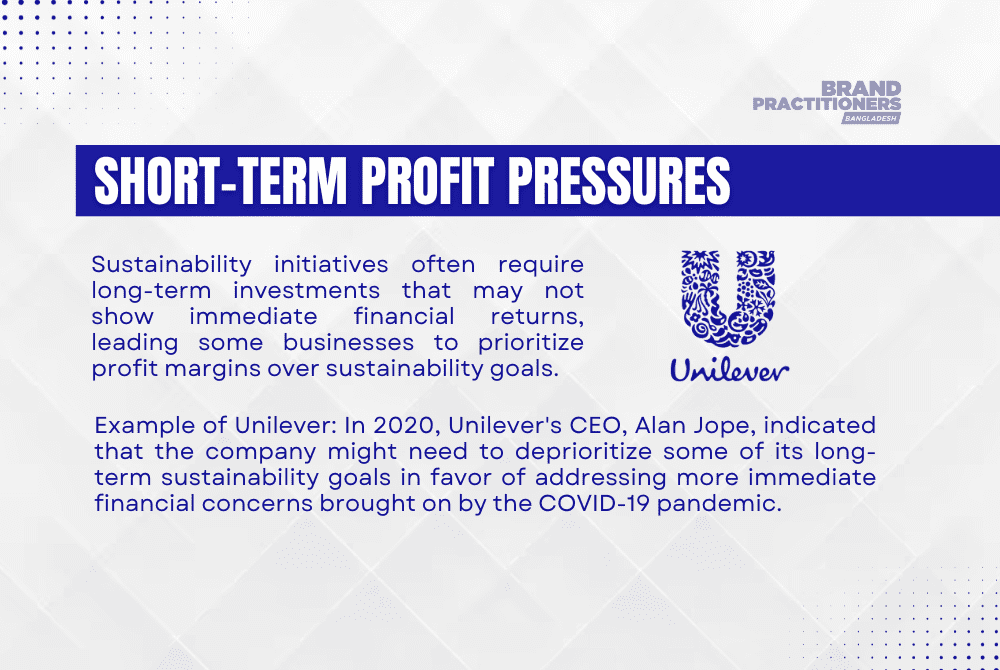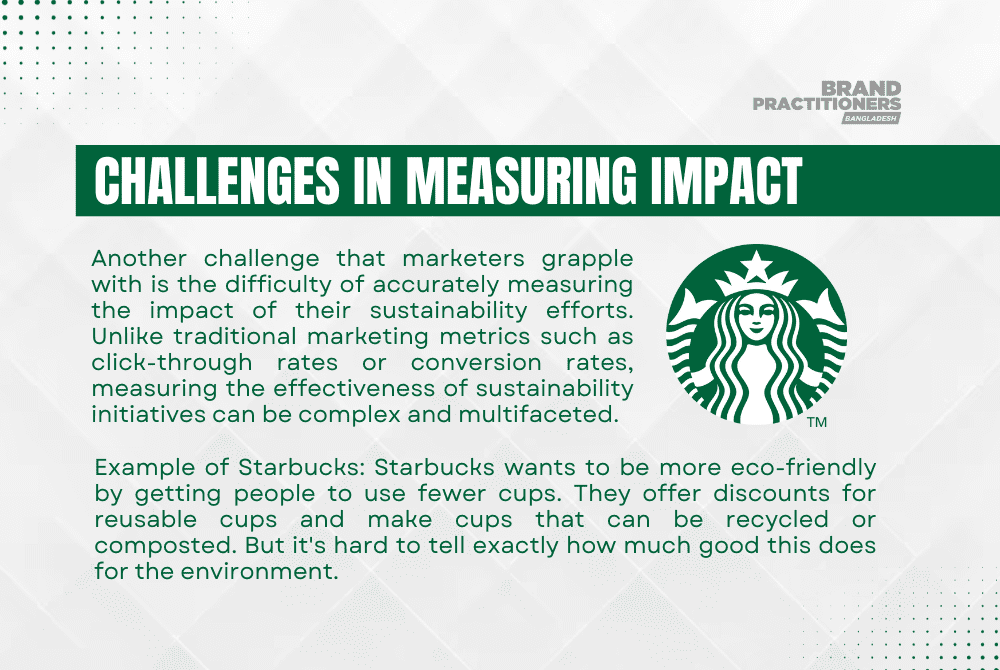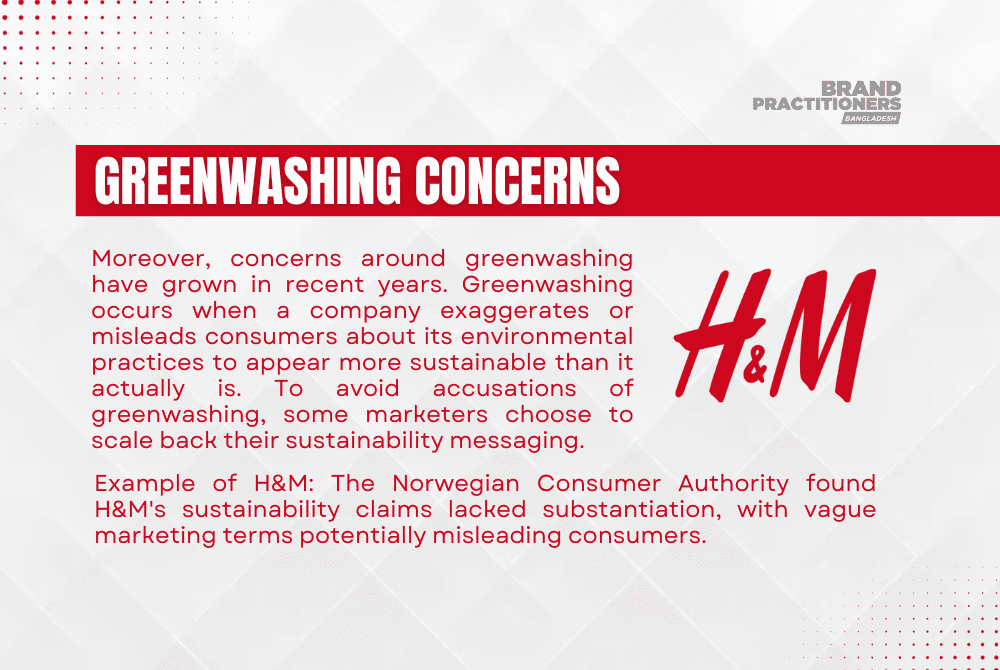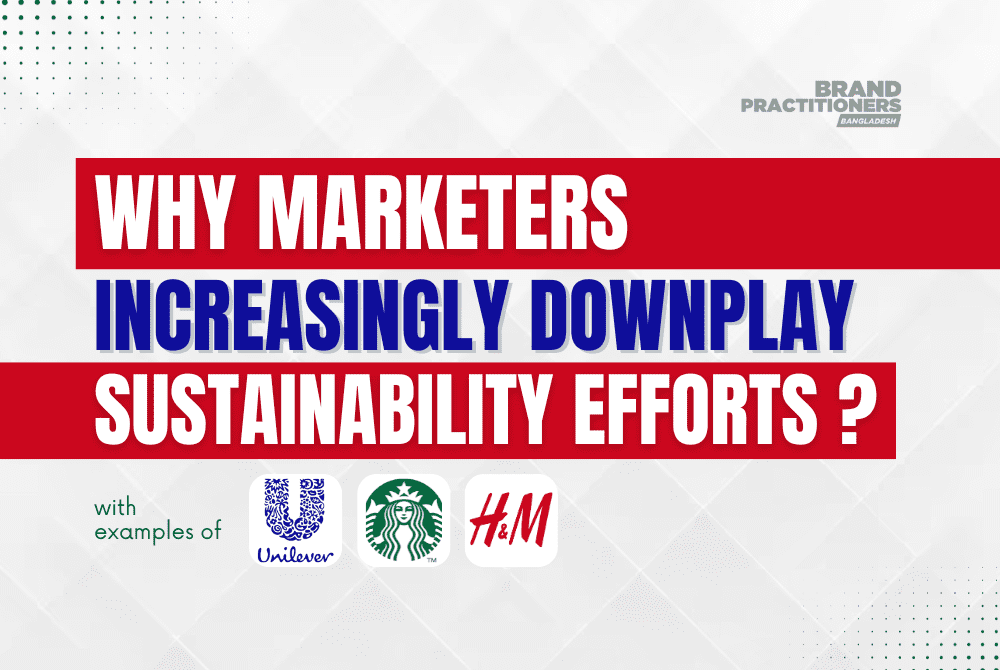
In recent years, there has been a noticeable trend among marketers to downplay their sustainability efforts. This shift raises questions about the reasons behind this change and its impact on consumer perception.
Reasons for Downplaying Sustainability Efforts
1. Short-term Profit Pressures
One primary reason for this downward trend is the increasing pressure on companies to deliver short-term profits. Sustainability initiatives often require long-term investments that may not show immediate financial returns, leading some businesses to prioritize profit margins over sustainability goals.

Example of Unilever: In 2020, Unilever’s CEO, Alan Jope, indicated that the company might need to deprioritize some of its long-term sustainability goals in favor of addressing more immediate financial concerns brought on by the COVID-19 pandemic.
The reports of Unilever sustainability COVID-19
Unilever, known for its strong commitment to sustainability through its Sustainable Living Plan, faced significant challenges during the pandemic. The economic downturn and changing consumer behaviors pressured the company to focus more on maintaining profitability and market share rather than pushing forward its ambitious sustainability projects, which often required substantial investments without immediate financial returns.
This situation underscores how even companies with a strong sustainability reputation can be compelled to shift their priorities when faced with acute short-term financial pressures, highlighting the broader industry trend of balancing sustainability initiatives with immediate profit goals.
2. Challenges in Measuring Impact
Another challenge that marketers grapple with is the difficulty of accurately measuring the impact of their sustainability efforts. Unlike traditional marketing metrics such as click-through rates or conversion rates, measuring the effectiveness of sustainability initiatives can be complex and multifaceted. This ambiguity can make it challenging for marketers to justify investment in these areas.

Example of Starbucks: Starbucks wants to be more eco-friendly by getting people to use fewer cups. They offer discounts for reusable cups and make cups that can be recycled or composted. But it’s hard to tell exactly how much good this does for the environment.
There are many reasons it’s difficult to measure. It’s not easy to track how many people actually use reusable cups, how much energy it takes to make different cup materials, and how much total waste gets reduced. Even when Starbucks sets big goals, like cutting their trash in half by 2030, it’s tough to know if they’re on track because waste management is different everywhere and they can’t always track what customers do with their cups.
This makes it hard for Starbucks to know if these eco-friendly efforts are worth the money, even though they might be good for the environment in the long run. Because it’s complicated and hard to measure the results right away, it’s sometimes difficult to fully commit to these programs and convince others of their importance.
The Starbucks cup reduction program impact measurement report highlights these challenges, emphasizing the complexities in tracking and quantifying the environmental benefits of their initiatives.
Source: More sustainable Starbucks cold cups are made with up to 20 percent less plastic
3. Greenwashing Concerns
Moreover, concerns around greenwashing have grown in recent years. Greenwashing occurs when a company exaggerates or misleads consumers about its environmental practices to appear more sustainable than it actually is. To avoid accusations of greenwashing, some marketers choose to scale back their sustainability messaging.

Example of H&M: In 2019, H&M launched a sustainable Conscious collection, facing greenwashing accusations for lack of transparency. The Norwegian Consumer Authority found H&M’s sustainability claims lacked substantiation, with vague marketing terms potentially misleading consumers.
Despite promoting sustainable practices, H&M’s fast fashion model’s environmental impact remained largely unchanged. H&M responded by adjusting its sustainability messaging to address greenwashing concerns, focusing on transparency and detailed information. This case demonstrates the importance of avoiding misleading consumers to maintain brand credibility.
Source: H&M Case Shows How Greenwashing Breaks Brand Promise
Impact on Consumer Perception
Several prominent companies have notably shifted away from emphasizing sustainability in their marketing campaigns. This move reflects a broader industry trend as businesses navigate the complex balance between profitability and environmental responsibility.
The shift towards downplaying sustainability efforts can affect consumer perception. Consumers are becoming increasingly skeptical of companies that make bold claims about their eco-friendly practices without substantial evidence to back them up. Authenticity in sustainable messaging is crucial to maintain trust and loyalty among today’s discerning consumers.
Industry Trends and Examples
Across various industries, we are witnessing this pivot towards more subdued messaging around sustainability. For example, fashion brands that once heavily marketed their eco-friendly materials and production processes are now opting for a more understated approach, focusing instead on design aesthetics and durability.
Final thoughts
While marketers may be scaling back on highlighting their sustainability efforts for various reasons, the importance of authenticity and transparency cannot be understated in today’s socially conscious marketplace.
Finding innovative ways to demonstrate genuine commitment to sustainability while addressing short-term profit pressures will be essential for businesses aiming to thrive in an increasingly environmentally aware consumer landscape.












